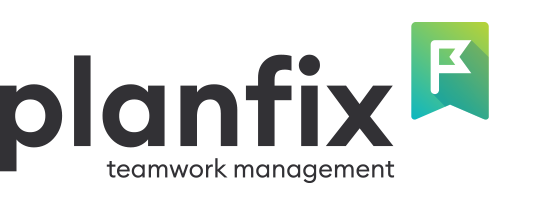
Chats/messengers and management systems have been fighting a full-fledged battle for the soul of the work team for ages. There can be no definite winner in this eternal standoff between Chaos and Order. Chats are enticing, with their simplicity, but they’re crippled by their inability to be monitored. Management systems, on the other hand, promise predictability but require discipline, which isn’t to everyone’s liking.
There has been a noticeable trend lately of chat services invading the enterprise market. At the forefront of the attack is Slack, a service that lets you split team communication into multiple channels, thus emulating a semblance of order.
Aided by its ability to retrieve messages from various external systems (including management systems like Asana, Jira, and others) Slack takes on the role of the command center, where messages from different sources are gathered and processed, and decisions are made.
For mini teams and process workflows (or mini projects) this might be enough. As long as participants have a concept of the big picture, and as long as the events they need to respond to are happening in sequence, the system will work.
But there are no examples of the reverse model on the market, where the chat is integrated into the management system in such a way that the system functions as the center for decision making and the chat is used for communication.
It’s important to understand that the existence of a chat in a management system that exists in parallel to the management system is not in and of itself a step in the direction of Order. On the contrary, when you add a chat to a management system, you’re really just adding a touch of Chaos. Communication on common tasks is diffused across multiple sources, including comments on projects or tasks, chat messages, Skype messages, and email. This has a negative effect on management that’s almost immediate.
The Planfix Telegram CRM integration is our attempt at figuring out if there’s life on the other side of the moon. With your help, and based on practical examples, we want to try to find a different model — one that combines the strengths of chat and management systems, one with the decision-making center located within the management system. We may end up just confirming that such a system can’t exist; a failure would be a result too, after all.
How to Use Telegram Working in Planfix
How to link the Planfix bot to Telegram with tasks and projects, merge company workflows with client communication in the interface they’re used to, and make work more efficient.
The bot acts as a link between the chat and Planfix CRM integration and can transfer information in both directions — from Planfix tasks to Telegram chats and vice versa. Moreover, the bot can create tasks and projects in Planfix, and switch between them.
What does this get you?
There are several ways to use Telegram to simplify your team’s work. This is just a small part of what you get with Planfix. Planfix is a flexible tool that lets you configure all sorts of workflows.
Creating a Chat for Quick Communication Using Tasks and Projects
Let’s start with something simple. Take a team that works with Planfix and uses chat to solve some sort of operational issues. When you link chat to a task, you get its full history available in the Planfix interface, as well as full-text search of its history and the ability to isolate crucial events as new tasks.

Setting Up Communication with Clients
Here’s a simple case for the other direction: now you can transmit events from other systems and apps to Telegram, which will then be sent to your Planfix account. For example, let’s say you receive information about payments received by your bank in Planfix tasks. This information needs to be seen by certain employees who don’t work in Planfix but do use Telegram. Create a Telegram chat where these employees are participants, and add the Planfix bot. Link the chat to the task where bank notifications are being sent, and they’ll be sent to Telegram. What you’ll ultimately get is a kind of Slack channel situation, receiving information from various external sources.

Communicating with Outsourced Teams
Let’s take another simple example. It can be difficult to get certain employees using Planfix. These employees may use chats readily, however, because chats help them quickly exchange information and resolve issues. One Planfix client, for example, uses a chat like this to communicate with employees at their company in the agriculture sector, who spend most of their time in the field (in the literal sense of the world).
By linking the chat to a task in Planfix, these employees’ manager gets:
- the history of their communication as comments on a task
- full-text search of this communication within Planfix
- the ability to create tasks for other employees who use Planfix based on messages from the chat
Linking Chat and Email
Now on to a slightly more complex scenario.
- Let’s say there’s a task in Planfix and a client you communicate with about this task via email.
- There’s also a chat where remote or offsite (or even just lazy) employees communicate — and maybe it’s also used by contractors.
- By linking a chat to this task using a bot, you get a direct interface between email and Telegram.
- Moreover, the client will only receive an email notification if they’re addressed directly in the chat with “@”. This lets you freely talk about whatever you need to in the chat, and the client will just see what’s addressed to them.
Employees use the chat, while the client writes emails — and the manager monitors everything in the Planfix task. Everyone’s in their comfort zone, and monitoring and management don’t suffer.
Linking a Chat to a Project
Chats can be linked to projects as well as tasks. This gives you the ability use chat commands to create tasks in the linked project. The task template selected as default for this project is used. For example, when you add employees from stores in other locations to the chat and link this chat to a “Store Support” project, you give the employees the ability to create tickets directly from the chat, which will be assigned as Planfix tasks to support staff. Moreover, these employees don’t even need to have Planfix accounts. For them, their work looks like an ordinary chat with some additional features.
The bot can work with different types of content. In addition to text messages, you can send it photos and videos, voice messages, or even geotags. All of this will be attached accurately to the appropriate Planfix task.

How to Link a Telegram Chat
How can you try this out?
1. Enable notifications in Telegram to link the bot to your Planfix account. All chat participants who use Planfix should do this, too. This will let their messages in the chat be sent to Planfix from their name. If they don’t do this, Planfix will automatically create a new contact when a message from them is received, and the message will be added from this new contact, not the existing one in the system. This could be useful when you’re working with external users, but in this case, it will just create duplicate contacts and cause confusion:
2. Add the Planfix bot to the desired Telegram chat (group). Be sure to add the bot in the group settings, as if you were adding a regular participant:

3. Use bot commands to complete Planfix actions:
- /task <New task name> or existing task number without the <> symbols – Link a task (new or existing) to the chat. Once a task is linked, new messages added to the task will be sent to the chat, and messages from the chat will be added to the task.
- /project <New project name> or existing project number without the <> symbols – Specify the project (new or existing) where the new tasks should be created:
- /find <search text> – find projects and tasks containing the given text in their name. Projects and tasks found will be listed with their numbers. This is helpful if you need to find the number of a project/task you want the chat to be linked to.
- /suspend – Manage chat transfer to Planfix: /suspend on enables transfer, /suspend off turns it off.
- /status – Provides information about the chat: which project/task it’s linked to and whether or not transfer from the chat to the task is enabled.
- /endtask – Unlinks a task from a chat.
- /endproject – Unlinks a project from a chat.
- Assignees of the linked task will receive notifications about new comments added to the Telegram group.
Nuances and Subtleties
The full Telegram integration is only available for paid and premium accounts. New accounts in the trial period can also try out this functionality. Employees with free accounts won’t be able to use the advanced bot features, but they can use the standard Planfix Telegram integration in full, and they can still receive and respond to notifications from the system without any restrictions.

